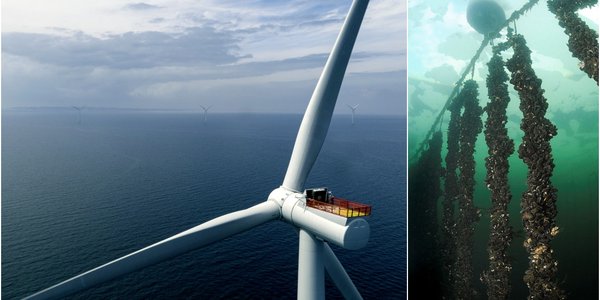Launching into an EU project to farm kelp and mussels at offshore wind farms

CEO at the Institute of Marine Research, Nils Gunnar Kvamstø welcomed the participants to the Ocean City Bergen.
Photo: Erlend A. Lorentzen / Institute of Marine Research
All 25 project partners from various European research and industry organisations were at the kick off meeting in Bergen.
Photo: Erlend A. Lorentzen / Institute of Marine ResearchPublished: 18.01.2023 Updated: 14.02.2023
Through the OLAMUR project, 25 partners from European industry and research organizations will work together to farm kelp and mussels at three pilot sites in Europe: two existing offshore wind farms and one fish farm that produces rainbow trout. (See fact box.)
The Institute of Marine Research (IMR) is leading the project, which had its kick-off meeting in Bergen this week.
Aiming for practical solutions
“The OLAMUR project is a prime example of the way we have to work to solve the big problems of our time. It is not only an interdisciplinary, international scientific effort, but a lighthouse project which is set to provide specific, sustainable solutions for actual industries – today”, said Nils Gunnar Kvamstø in his opening speech to the project partners.
In this case, how can you combine energy production and sustainable food production, while perhaps also providing services to the ecosystem? The project will investigate several aspects of this, such as:
- Practical solutions to the challenge of farming in exposed offshore environments.
- Are the kelp/bivalves safe to eat? For example, people are concerned about microplastics and hydraulic fluid from wind turbines.
- Potential carbon storage and habitat enhancement from farming kelp/bivalves.
- Legislation and regulation (bureaucratic barriers to co-location?)
- In practice, wind farms act as reserves for fish and other animals, since fishing is prohibited – can this type of reserve benefit some species and even fisheries?
- Can we improve the habitat for fish and other animals by creating artificial reefs there?
Great value to Norway
The EU was also represented at the meeting, making their expectations for the project clear. It is a means in achieving the 2030 missions goal of restoring their oceans and waters through research, innovation and blue investment. The EU want solutions for sustainable growth and reduced emissions.
The project may also be of great value to Norway through knowledge transfer. The Norwegian offshore wind industry is in its birth, and the coast is running out of space for fish farms. Conflicts of interest are beginning to arise.
“We have been blessed with vast space along the coast and in our waters. But now that space is shrinking, metaphorically. We have a historic opportunity to be proactive in enabling co-existance in new offshore industries, as well as creating synergies”, IMR CEO Nils Gunnar Kvamstø says.
And then there’s the technical issue of how to design and operate aquaculture in extreme conditions offshore, which is by no means trivial, if we are to believe the researchers.
The project partners in the various work packages are now in the planning process.
At the pilot facilities in Denmark and Estonia, gear will probably be put into the sea this year, with Germany following in 2024.


